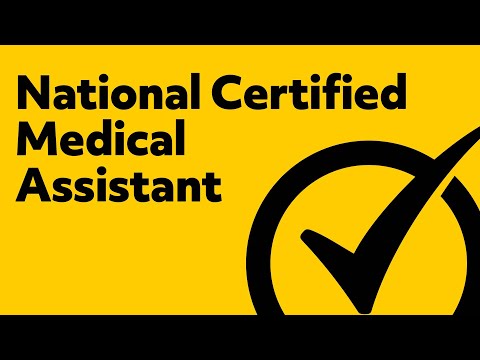What’s the Difference Between a Clinical Medical Assistant and an Administrative Medical Assistant?
Contents [show]
Many people are interested in pursuing a career in the medical field, but are unsure of which route to take. This blog post will explore the differences between two popular medical assistant positions – clinical and administrative – to help you make a decision about which one is right for you.
Checkout this video:
Job Duties
The main difference between clinical Medical assistants and administrative medical assistants is their job duties. Clinical medical assistants typically provide direct patient care, whereas administrative medical assistants typically handle tasks related to office administration.
Clinical medical assistants typically have more direct contact with patients than administrative medical assistants. They may take vital signs, such as blood pressure, weight, and temperature, and document the results in patients’ charts. They may also prepare patients for examinations, assist with procedures, give injections, collect and prepare laboratory specimens, perform basic laboratory tests, change dressings, explain treatment procedures to patients, and provide post-treatment instructions.
Administrative medical assistants typically handle office duties such as scheduling appointments, billing and insurance tasks, handling correspondence, maintaining medical records and transcribing physicians’ orders. They may also assist with marketing and public relations activities. Although administrative medical assistants have less contact with patients than clinical medical assistants, they still need to be able to maintain a professional demeanor and be able to answer questions from patients and other members of the public.
Education and Training
Medical assistants can be divided into two broad categories: clinical medical assistants and administrative medical assistants. Although the duties of these professionals overlap to some extent, they have different areas of focus and require different levels of education and training.
Clinical medical assistants are responsible for performing basic clinical tasks such as taking patient vital signs, measuring blood pressure, preparing patients for examination, assisting with procedures, collecting and processing lab specimens, and providing patient education. They may also be responsible for maintaining Medical records and scheduling appointments. Clinical medical assistants typically need to complete a postsecondary educational program lasting anywhere from 6 to 18 months. Some states also require clinical medical assistants to be certified.
Administrative medical assistants are responsible for performing basic office tasks such as answering phones, greeting patients, handling correspondence, scheduling appointments, filing insurance claims, coding medical records and managing billing and payments. They may also be responsible for maintaining medical records and ordering supplies. Administrative medical assistants typically need to complete a postsecondary educational program lasting anywhere from 6 to 12 months. Some states also require administrative medical assistants to be certified.
Certification
There are two types of medical assistants: clinical medical assistants and administrative medical assistants. Both types of medical assistants perform basic administrative and clinical tasks in a healthcare setting, but their duties are different.
Clinical medical assistants are often responsible for more patient contact than administrative medical assistants. They may take patient histories, measure vital signs, give injections, schedule appointments, prepare patients for exams, and provide instruction on home care Administrative medical assistants perform tasks such as billing and coding, insurance paperwork, scheduling appointments, and maintaining medical records.
Most clinical medical assistants have completed a postsecondary education program, although some may have on-the-job training. Many administrative medical assistants have completed postsecondary education programs, but some may have on-the-job training. Some states require clinical medical assistants to be certified by a professional organization such as the American Association of Medical Assistants or the National Healthcare Association. Most employers prefer to hire certified medical assistants. Administrative medical assistants are not usually required to be certified by a professional organization, but some states have certification programs for these workers.
Salary and Job Outlook
The salary for a clinical medical assistant is generally higher than for an administrative medical assistant. Clinical medical assistants also have better job prospects, as the demand for their skills is expected to grow much faster than for administrative medical assistants.
Clinical medical assistants are in high demand because of their unique skillset. They are able to perform both clinical and administrative duties, which allows them to work in a variety of healthcare settings. Furthermore, their training gives them the ability to handle a variety of tasks, such as taking patient histories, performing physical exams, and assisting with diagnostic testing.
Although the salary for an administrative medical assistant is lower than for a clinical medical assistant, the job outlook is good. The demand for administrative medical assistants is expected to grow at a faster rate than for other types of assistants, due to the increasing complexity of the healthcare system. Administrative medical assistants play a vital role in keeping healthcare facilities running smoothly and efficiently.
Key Differences
There are key differences between clinical medical assistants and administrative medical assistants. Clinical medical assistants perform basic patient care tasks such as taking vital signs, drawing blood, and administering injections. They may also assist physicians with exams, provide instruction to patients on taking medication, and perform basic laboratory tests. Administrative medical assistants handle mostly office duties such as answering phones, scheduling appointments, and billing insurance companies. They may also greet patients, prepare exam rooms, andupdate patients’ medical records.
Clinical Medical Assistants
Clinical medical assistants are those who work alongside physicians and other healthcare providers in direct patient care. They may take blood, measure vital signs, give injections, prepare specimens for testing, assist with procedures and perform basic lab tests. They also educate patients on health maintenance and disease prevention. Clinical medical assistants must have completed an accredited training program and may be required to take a certification exam.
Administrative medical assistants perform the business tasks in a healthcare setting. They schedule appointments, maintain medical records, handle billing and coding, complete insurance forms and do other clerical work. Administrative medical assistants also contact patients to remind them of upcoming appointments and to provide test results or instructions from the physician. They may be responsible for handling correspondence, answering phone calls and managing the front desk area.
Administrative Medical Assistants
Administrative medical assistants handle the back-end work of doctor’s offices and clinics. They make sure the office runs smoothly so the clinicians can focus on patient care. Most administrative medical assistants have a high school diploma or equivalent, although some positions may require postsecondary education, and most states require certification.
Clinical medical assistants, on the other hand, work directly with patients. They take vital signs, prepare patients for exams, assist with procedures, give injections and perform other clinical tasks as directed by a clinician. Many clinical medical assistants have completed a postsecondary education program and are certified. Some states also have licensure requirements for clinical medical assistants.
Working in Healthcare
The medical assistant job description can vary greatly from one employer to the next. There are, however, some common duties and responsibilities that are shared by most medical assistants.
Clinical medical assistants perform a variety of tasks that are important to the smooth running of a healthcare facility. They may take patient medical histories, assist with examinations, perform routine laboratory tests and give patients injections. They also may schedule appointments, answer phones and keep records.
Administrative medical assistants perform many of the same tasks as clinical medical assistants, but their duties are primarily office-based. They may prepare reports, file insurance claims, bill patients and keep financial records. They also may answer phones, schedule appointments and provide customer service.
Medical Assistants: An Overview
Medical assistants are entry-level members of the medical support staff who perform a variety of administrative and clinical tasks. They may work in hospitals, clinics, physician’s offices, and other healthcare settings.
There are two types of medical assistants: clinical medical assistants and administrative medical assistants. Clinical medical assistants perform basic patient care tasks such as taking vital signs, updating patient medical histories, and preparing patients for examinations. Administrative medical assistants handle office duties such as scheduling appointments, billing insurance companies, and handling correspondence.
Medical assistants must have a high school diploma or equivalent. Some states have certification programs for medical assistants, but certification is not required for all positions. Medical assistants typically receive on-the-job training that lasts several months to a year.
Conclusion
So, what’s the difference between a clinical medical assistant and an administrative medical assistant? Administrative medical assistants generally handle more of the business side of things, while clinical medical assistants are more focused on patient care. Both types of medical assistants are important members of the healthcare team, and both require a high level of skill and training.







